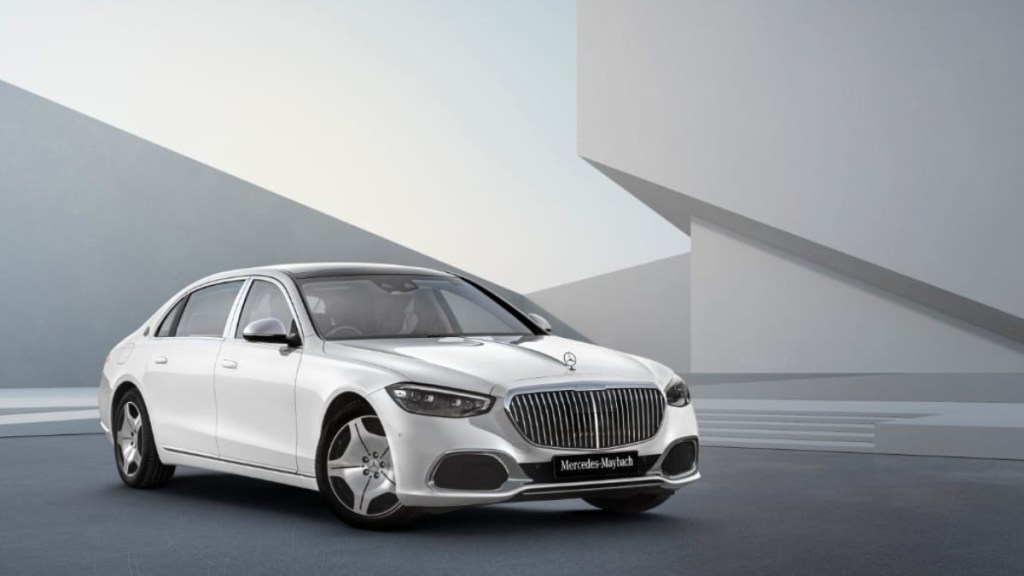After launching both the Maybach S-Class S680 4MATIC and S580 MATIC, the units of the locally produced S580 are sold out in the first month. How do you plan to meet the demand?
The allocation for the CBU version, the S680, is getting booked as we speak. As for the locally produced car, the S580, the month’s first set of units, is sold out, but we are accepting bookings and we will be able to deliver the cars in three to four months. Even before the official launch and price announcement of the Maybach S-Class, customers were already booking the car. They also know that we won’t compromise on the equipment and the level.
When it comes to our SUV range — the Maybach-GLS, standard GLS, G-Wagon, are all completely sold out till next year. This means that we have customers who have a waiting period of 12 months. This doesn’t mean that the cars will start coming in from next year. Every month, we will continue selling them, but the pipeline is filled up as the consumers have already booked the cars.
How many units are allotted to the Maybach S680?
Mercedes-Benz S-Class does 800-1000 units per year and the Maybach contributes around 20 per cent of the total sales of the segment. We lead this segment by a huge margin.
How much of a challenge is it for Mercedes-Benz India to locally make the Maybach S580?
Even though we already produce the S-Class locally, when it comes to the Maybach, it consists of many handcrafted elements. So, we need a skilled workforce to support the software, technology and other requirements of the Maybach. We take pride in making the Maybach here in Pune and it has one of the best quality standards in the world.
With the shortage of semiconductors, how are you managing to meet the customer demand?
Our supply chain has improved when compared to last year. We are able to make 20-30% more cars, but the demand is 50-60% more than what it was. When it comes to managing customers, we are transparent about the delivery of the car as many buy these cars for an occasion. In case the car is further delayed, we send the customer a note explaining why this has happened. Also, in today’s times, customers are aware of the challenges the world is facing. We have customers who understand these things, but constant communication is the key for us.
Mercedes-Benz Financial Services has adopted a new seamless and paperless approach. Could you tell us a bit about that?
We have digitized the entire contract process, which makes it convenient for our customers. Once the contract is signed, generally the financiers release the delivery order (DO) and post that there is also payment and then you wait for the payments to go through before you hand over the car. With Mercedes-Benz Financial Services, the moment the contract is signed and the DO is generated, we can deliver the car to the customer even if it’s a bank holiday. This helps as we can deliver the car at the weekend or during a festival period. These are small but significant advantages that ensure customers’ experience is better.
Mercedes-Benz India changed the entire structure of the dealership. How challenging was it and do you see the company now reaping the benefits?
By changing the earlier dealer model to the franchisee partnership model, I can term this as the biggest change Mercedes-Benz has gone through in the last 27 years in India. This was a fundamental change in the business pattern like no more stocking cars and no more wholesales. Initially, our franchisee partners couldn’t believe that we would bill them cars. Second, discounts were standardized. That’s a big step for customers as now they know they are getting the best deal. As the offer is given upfront, everything is transparent. The other challenge was on the IT (information technology) side. As India is a large country, we have so many Regional Transport Offices and the first thing we had to do was register the car and then the Vahan was updated, so there’s a lot of responsibility when we adopted this model. To get all this in place was a logistic challenge, including setting up GST and setting up local warehouse facilities across the country.
The third leg is to come up with a seamless experience for both offline and online and the customer has to be able to see the same car and price that’s available on the website. The entire transaction, starting from the quotation to order processing to invoice to payments and as we have so many banks paying us directly now and to account them digitally. We are now well settled and both the customers and Mercedes-Benz are reaping the benefits. We are also now closer to the customers by analyzing the data. Also, we can personalise a lot of things now.
